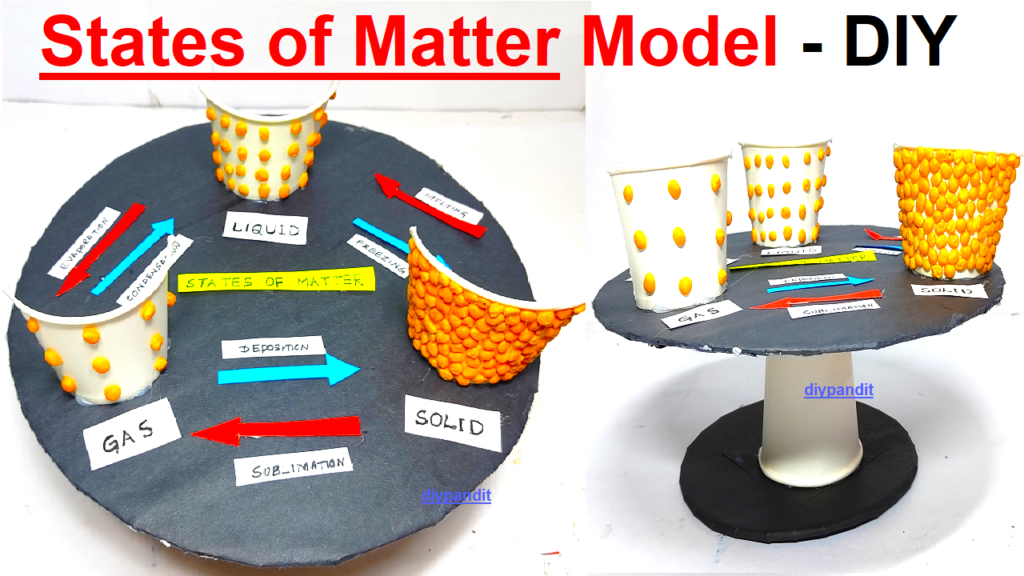Creating a 3D model of states of matter using dals (lentils or pulses) and paper cups can be a fun and hands-on science project.

This model helps visually represent the three states of matter: solid, liquid, and gas.
Here’s a step-by-step guide:
Materials Needed:
- Dals or pulses (lentils, chickpeas, or any small dry beans)
- Paper cups (preferably clear or translucent)
- Markers or paint
- Cardboard or a sturdy base
- Glue or tape
- Labels and markers for labeling parts
- Small containers or plastic bags (optional for storage)
Step by Step Video Instructions on Making 3D model of states of matter:
1. Prepare the Base:
- Use a piece of cardboard or a sturdy base as the foundation for your 3D model.
2. Labeling:
- Label different sections on the base for each state of matter: Solid, Liquid, Gas.
3. Representing Solids:
- In one section, glue or tape paper cups upside down to represent solids. You can fill these cups with dals to showcase a variety of solid shapes.
4. Representing Liquids:
- In another section, use clear or translucent paper cups to represent liquids. Partially fill these cups with dals to simulate the movement of particles in a liquid state.
5. Representing Gases:
- In the third section, scatter dals loosely on the base to represent gas particles. You can also place a few dals in clear cups turned upside down to simulate gas particles trapped in a container.
6. Decoration:
- Decorate the base and cups using markers or paint to enhance the visual appeal of your model. You can color the dals or label the cups.
7. Interactive Element (Optional):
- Consider adding a small container or plastic bag with extra dals labeled “Storage” to demonstrate that the dals can move from state to state.
This 3D model using dals and paper cups provides a tangible representation of abstract scientific concepts, making it an effective educational tool for a science project. Adjust the complexity based on your audience and time constraints.

